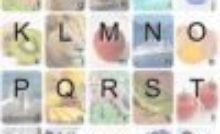Lesson 16. Understanding the Difference Between Which and That




The answer is ‘no’. Just because they are both used for introducing relative clauses does not mean that they have the same usage.
The quick rule to get it right:
- If you could remove ‘the clause’ without changing the meaning of the rest sentence, choose ‘which’.
- By contrast, use ‘that’, if you might lose the essential details when you discard ‘the clause’.
Which
Which introduces ‘nonrestrictive clause’ (also known as nonessential or nondefining clauses). Nonrestrictive clause works only as an additional information. If you leave off ‘the clause’, the meaning of the sentence does not change. These clauses are usually separated by commas.
My house, which is located at the end of the street, is new.
The sentence intends to tell us that ‘My house is new’. Therefore, the sentence would be clear even if the clause ‘which is located at the end of the street’ was omitted.
That
That introduces ‘restrictive clause’ (also known as essential or defining clauses). The restrictive clause gives the essential information to the sentence. As a result, we cannot leave ‘the clause’ out.
The woman that wears a red dress is my best friend.
In this sentence, the second clause ‘is my best friend’ describes the noun ‘the woman that wears red dress’. Without the word ‘that wears a red dress’, the information is not clear. Consequently, removing the words ‘that wears a red dress’, the sentence meaning would be altered.
For Quantifiers, Use ‘That’
Quantifiers (all, everything, something, the thing) are followed by ‘that’ instead of which.
Everything that they do, they do well.
How is it? By understanding when to use ‘which’ and ‘that’, you can avoid this common English mistake from now! Read: The Correct Way to Use High vs Tall, Good vs Well, Complete vs Finish, Breath vs Breathe, and also Everyday vs Every Day.
Let’s learn a new language today! Join us at LingoCards!
